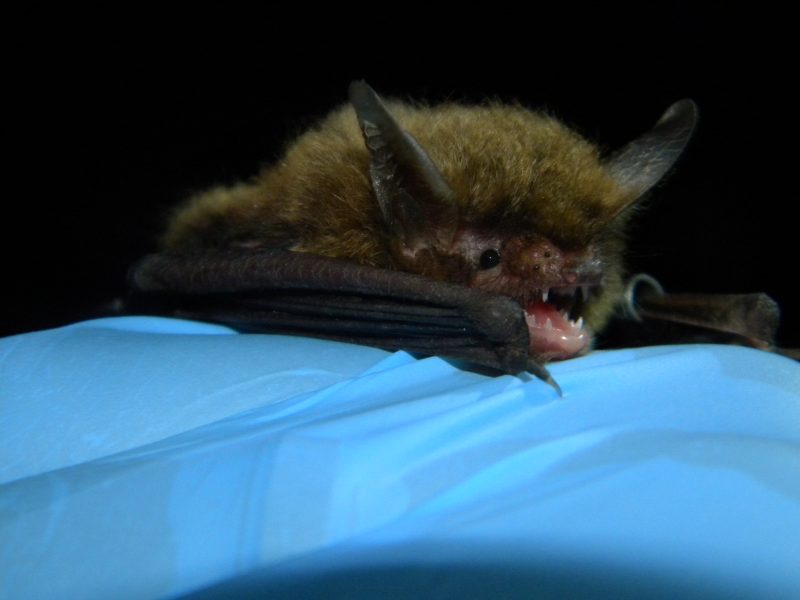
Formerly one of the most abundant bat species in the eastern U.S. and Canada, the northern long-eared bat has been listed as endangered by the U.S. Fish and Wildlife Service.
The species has suffered drastic population declines due to white-nose syndrome (WNS), a disease caused by a cold-loving fungal pathogen that infects bats during their winter hibernation.
Virginia Tech expert Jesse De La Cruz says northern long-eared bats are an important component of Virginia’s wildlife and the health of our forests. He emphasizes the importance of creating healthy forest conditions for the newly endangered species in their survival.
“Despite recent losses, creating and maintaining forest conditions that provide day-roosting and night foraging habitat are still important conservation practices, especially in areas where northern long-eared bats still persist,” says De La Cruz.
Particular tree species may aid in the survival of the northern long-eared bat,and additional measures should be taken to improve forest conditions.
“Regenerating favored tree species such as black locust (Pseudoacacia robinia), sassafras (Sassafras albidum), and oak (Quercus spp) can help improve forest conditions for the future survival of northern long-eared bats,” says De La Cruz. “Use of prescribed fire often improves day-roost conditions as well.”
Certain northern long-eared bat populations on the Atlantic Coast from the Carolinas to Cape Cod have managed to persist through the infection by adapting to the surrounding environment and adjusting their hibernation schedules, according to De La Cruz.
“Due to the moderate climate of the coast, we suspect bats in this region engage in shorter hibernation bouts, often overwintering in hollow trees or human structures, where the fungus likely does not occur or lacks an infection period long-enough to kill bats,” according to De La Cruz.
The new endangered listing status will present challenges for land managers in heavily forested states such as Virginia. As more northern long-eared bats die from WNS, forest management should take into account the resource requirements and phenology of the species to promote sound conservation.
“Any action that removes trees has the potential to harm northern long-eared bats, particularly removal of trees having cavities or sloughing bark prior to when juvenile bats are able to fly,” says De La Cruz.
Researchers at Virginia Tech are using acoustic surveys to monitor northern long-eared bat populations and have developed robust occupancy models to predict where the species likely remains in the mid-Atlantic and Northeast. These tools are designed to help land managers understand the potential for impacts and identify conservation areas to support the species. Moreover, from radio-tracking individuals, researchers have documented forest conditions and landscape settings the bat uses, information managers may use to conserve or create suitable habitat.
Jesse De La Cruz is a research associate specializing in wildlife biology and ecology at the Conservation Management Institute of Virginia Tech. His research primarily focuses on population monitoring, landscape ecology, and survey design for northern long-eared and Indiana bats. De La Cruz serves as the mid-Atlantic hub coordinator for the North American Bat Monitoring Program (NABat). As hub coordinator, he works closely with agency partners and citizen-scientist groups, such as the Virginia Master Naturalist Program, to promote both local and continental scale conservation of bats.


